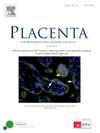Inflammation-induced TET3/mir-3942 axis impedes the proliferation and invasion ability of trophoblast cells through destabilization of SERPINE1 in preeclampsia
IF 3
2区 医学
Q2 DEVELOPMENTAL BIOLOGY
引用次数: 0
Abstract
Introduction
Abnormal expression of TET3 has been established to be associated with aberrant function of trophoblasts and lead to the progression of Preeclampsia (PE). Yet, the underlying mechanism of PE mediated by TET3 has not been elucidated.
Methods
Target factors downstream of TET3 were identified by RNA-seq. Functional assays were used to assess the effects of TET3/SERPINE1 on the proliferation and invasion capabilities of HTR-8 and JAR. ChIP-PCR and Targeted bisulfite sequencing were conducted to detect the demethylation in the SERPINE1 promoter after inhibition of TET3. Luciferase reporter assays were performed to elucidate the mechanism by which miR-3942 binds to TET3/SERPINE1 mRNA. TET3 knockout mice and uterine artery ligation mice to further verify the reliability of this conclusion.
Results
First, we identified genes mediated by TET3 in HTR-8 by RNA-seq. Then, we focus on SERPINE1 as the special downstream gene. The resulting data showed that SERPINE1 could reduce the proliferation and invasion. RNA-seq and mechanism analysis indicated that inhibition of TET3 suppressed the activation of SERPINE1 by reducing the demethylation of related CpG sites in the SERPINE1 promoter, thereby transcriptionally inactivating SERPINE1 expression. Moreover, luciferase reporter assay indicates that TET3 and SERPINE1 were direct targets of miR-3942. At last inflammatory cytokines may stimulate trophoblasts to enhance TET3 expression, promoting demethylation of SERPINE1 promoter and inducing SERPINE1 expression.
Discussion
This study uncovers a TET3-mediated regulatory mechanism which can be stimulate by inflammatory cytokines in PE progression and suggests that targeting the miR-3942-TET3-SERPINE1-axis may provide new predictive and therapeutic interventions for PE.
炎症诱导的TET3/mir-3942轴通过破坏子痫前期SERPINE1的稳定来阻碍滋养细胞的增殖和侵袭能力
TET3的异常表达与滋养细胞功能异常有关,可导致子痫前期(PE)的进展。然而,TET3介导PE的潜在机制尚未阐明。方法采用RNA-seq法鉴定TET3下游靶因子。采用功能试验评估TET3/SERPINE1对HTR-8和JAR的增殖和侵袭能力的影响。通过ChIP-PCR和靶向亚硫酸盐测序检测TET3抑制后SERPINE1启动子的去甲基化。通过荧光素酶报告基因分析来阐明miR-3942与TET3/SERPINE1 mRNA结合的机制。TET3基因敲除小鼠和子宫动脉结扎小鼠进一步验证这一结论的可靠性。结果首先,我们通过RNA-seq鉴定了HTR-8中TET3介导的基因。然后,我们将重点放在SERPINE1这个特殊的下游基因上。结果表明,SERPINE1具有抑制细胞增殖和侵袭的作用。RNA-seq和机制分析表明,抑制TET3通过减少SERPINE1启动子中相关CpG位点的去甲基化来抑制SERPINE1的激活,从而使SERPINE1的表达转录失活。此外,荧光素酶报告基因检测表明TET3和SERPINE1是miR-3942的直接靶点。最后,炎症因子可能刺激滋养细胞增强TET3表达,促进SERPINE1启动子去甲基化,诱导SERPINE1表达。本研究揭示了tet3介导的调控机制,该机制可在PE进展中被炎症细胞因子刺激,并表明靶向mir -3942- tet3 - serpine1轴可能为PE提供新的预测和治疗干预措施。
本文章由计算机程序翻译,如有差异,请以英文原文为准。
求助全文
约1分钟内获得全文
求助全文
来源期刊

Placenta
医学-发育生物学
CiteScore
6.30
自引率
10.50%
发文量
391
审稿时长
78 days
期刊介绍:
Placenta publishes high-quality original articles and invited topical reviews on all aspects of human and animal placentation, and the interactions between the mother, the placenta and fetal development. Topics covered include evolution, development, genetics and epigenetics, stem cells, metabolism, transport, immunology, pathology, pharmacology, cell and molecular biology, and developmental programming. The Editors welcome studies on implantation and the endometrium, comparative placentation, the uterine and umbilical circulations, the relationship between fetal and placental development, clinical aspects of altered placental development or function, the placental membranes, the influence of paternal factors on placental development or function, and the assessment of biomarkers of placental disorders.
 求助内容:
求助内容: 应助结果提醒方式:
应助结果提醒方式:


